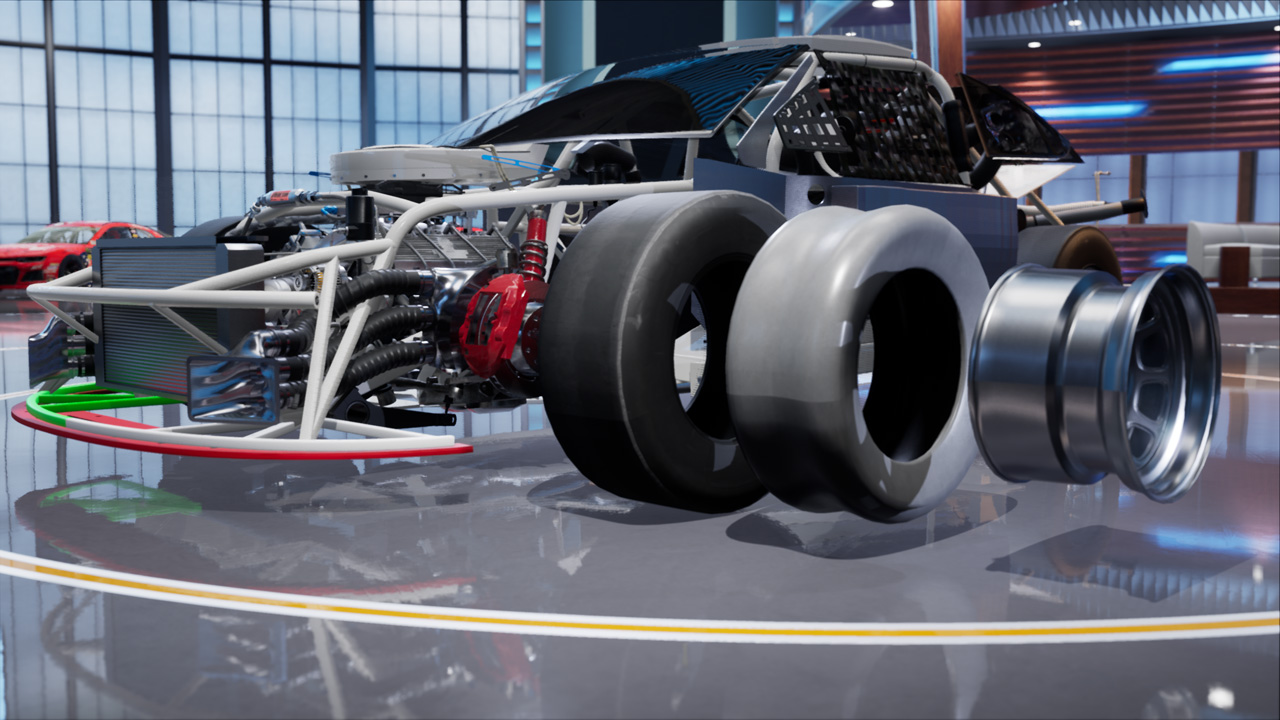New NASCAR Studio Puts Fox Sports In VR, AR Driver Seat
CHARLOTTE, N.C.—Fox Sports will debut a new high-tech set as the home of its NASCAR coverage in February 2019 that leverages the latest advancements in virtual set and augmented reality technology to create an element of on-screen sizzle fans won’t soon forget while bringing a high degree of flexibility to its productions.
At the heart of the tech setup behind this sizzle and flexibility is the Epic Games Unreal Engine 4, along with Zero Density studio software, which provides advanced keying for the virtual set, and custom software to enable all of the data needed for the set to be edited in a live broadcast environment.
CUSTOMIZE QUICKLY
A key advantage of basing the new 3,600-square-foot studio on virtual set and augmented reality (AR) technology is the ability to customize studio spaces quickly and affordably for different shows. However, in the view of Zac Fields, senior vice president of Graphic Technology and Integration for Fox Sports, that was not a realistic alternative until recently.
“A lot of networks would institute some green screen space to have some more flexibility of a virtual set,” says Fields. “The problem was they didn’t look nearly as good as what you can do now with the current tools that are out there.”
Having overcome that obstacle, the technology allows Fox Sports to react quickly in a virtual setting to what happens on the racetrack from week to week and show to show without the time or expense of doing something similar with hard set elements or entirely foregoing illustrating an important fact or concept to viewers because of the sheer impossibility of doing so in the real world.

For instance, bringing the Daytona 500 track up from the floor of the virtual set to explain the banking and surface of the track is something that could only be done in a virtual environment, says Mike Dolan, vice president of Design at Fox Sports.
Get the TV Tech Newsletter
The professional video industry's #1 source for news, trends and product and tech information. Sign up below.
Depending on what’s needed to analyze a race, the system can instantly bring into the set 3D racecars, engines, wheel assemblies and any other element needed to better inform NASCAR fans, he adds.
The core 3D rendering technology along with other essential gear needed for the set gives the designers at Fox Sports an unprecedented level of creative freedom, he adds.
“With these tools, it’s not so much what’s possible,” says Dolan. “It’s what do you want to do? Whatever you can imagine is now possible, and it will look as real as you want.”
Viewers will see the set early next year when it debuts as the home of “NASCAR Race Hub,” “NASCAR RaceDay,” and other NASCAR programming, according to Fox Sports.
WORLD CUP EXPERIENCE
Beyond the core gaming engine and software that powers real-time rendering and a photorealistic look, the studio relies on five Stype Red Spy encoded cameras, including a Steadicam and a jib camera; Blacktrax 3D tracking technology to trigger events on set automatically; a 50-by-47-foot green screen area; and real-time AR combining real set elements and 3D graphics.
Check out this sizzle reel:
While Fox Sports had been tracking the progress of virtual sets and AR technology for a few years, it was the preparations for the 2018 FIFA World Cup in Russia that confirmed to the broadcaster that the technology was fully baked. Fox Sports built a mock-up set simply to show internally what was being planned for coverage of the international soccer championship, including where in Red Square the network wished to locate its set, explains Dolan.
“After we built it, it opened eyes about what is really possible with this platform,” he says.
Video game renderers like the Unreal Engine 4 have increased the level of photorealism that can be achieved in a virtual set environment, he adds. “That is where the video game renderers have really come into play with the level of 3D and photorealism you can achieve, but still run that in real time.”
When paired with the Blacktrax technology, the setup allows on-screen talent and race analysts to manipulate 3D objects in the virtual set to better explain something to viewers, adds Fields.
While both Dolan and Fields declined to reveal how much the new studio cost Fox Sports, Fields describes the expenditure as “a heavy investment.”
The technology may one day have a role in the coverage of other sports by the broadcaster, but no plans have been announced.
“There’s no reason this would continue to be only a NASCAR thing. There are so many advantages,” says Fields. “It only helps productions tell their stories and make them more interesting.”
Phil Kurz is a contributing editor to TV Tech. He has written about TV and video technology for more than 30 years and served as editor of three leading industry magazines. He earned a Bachelor of Journalism and a Master’s Degree in Journalism from the University of Missouri-Columbia School of Journalism.

